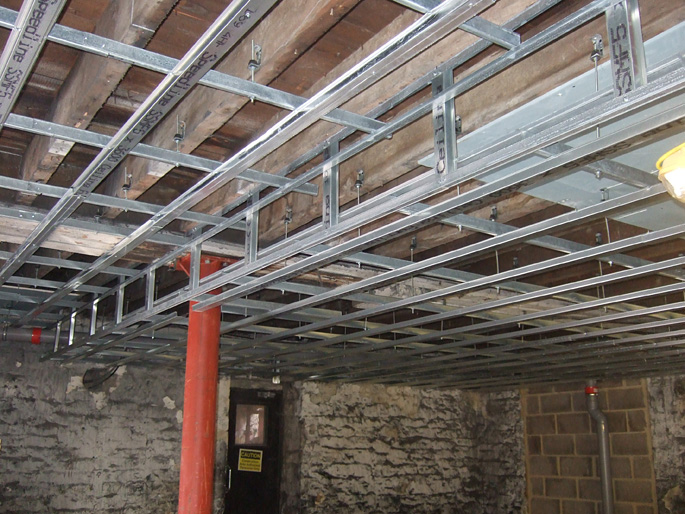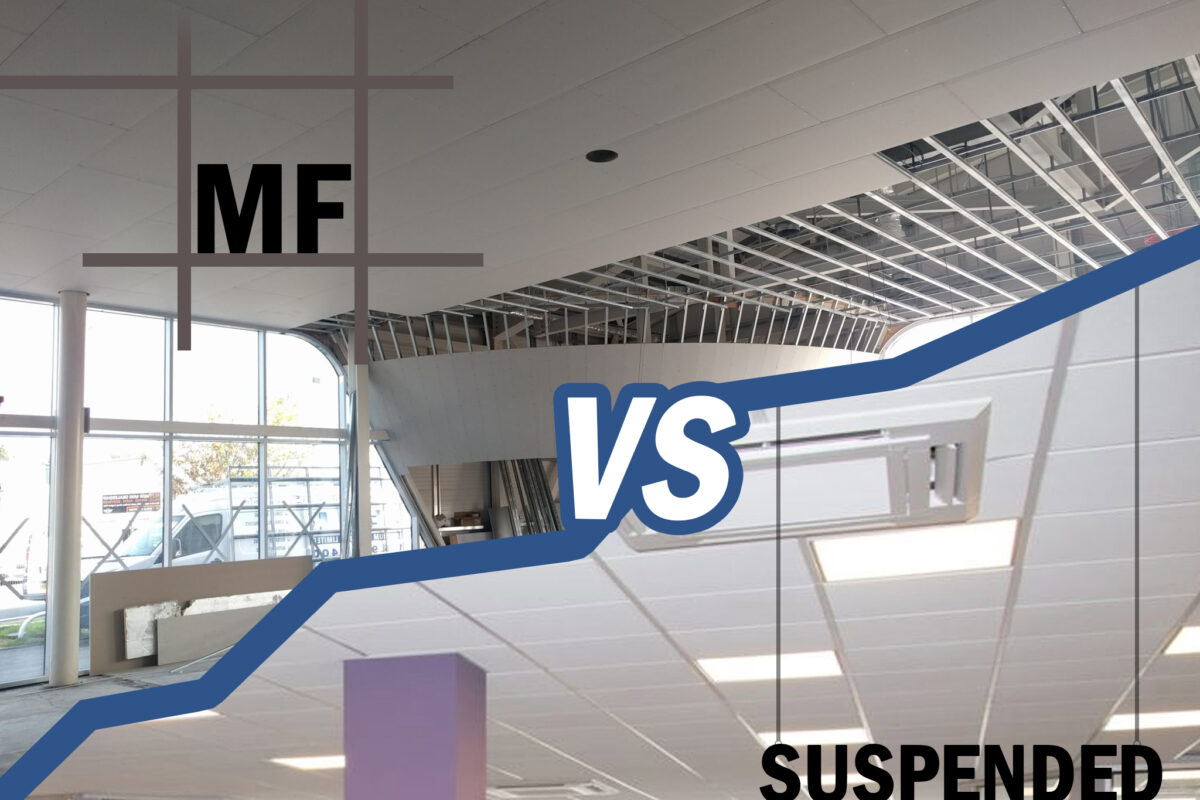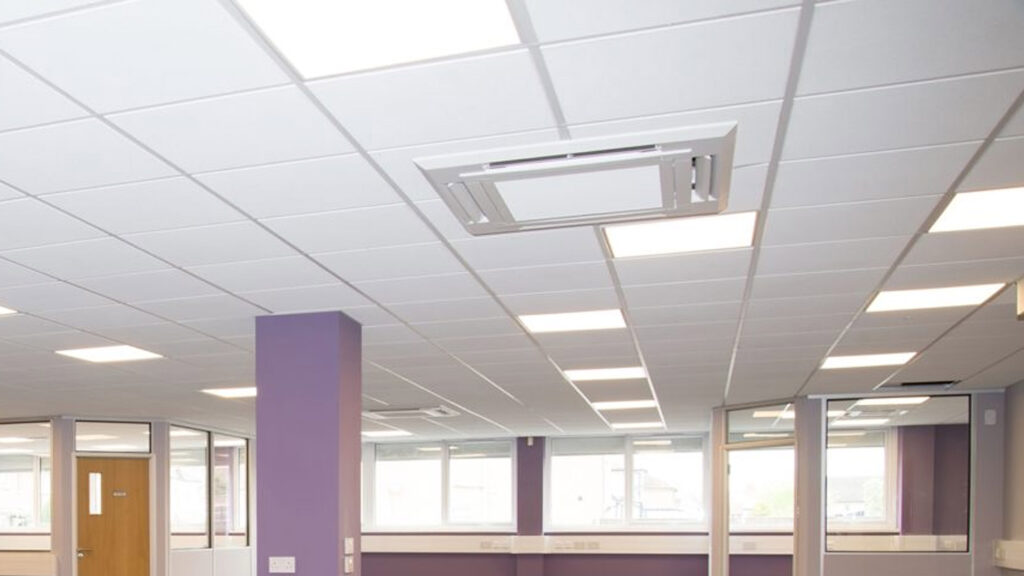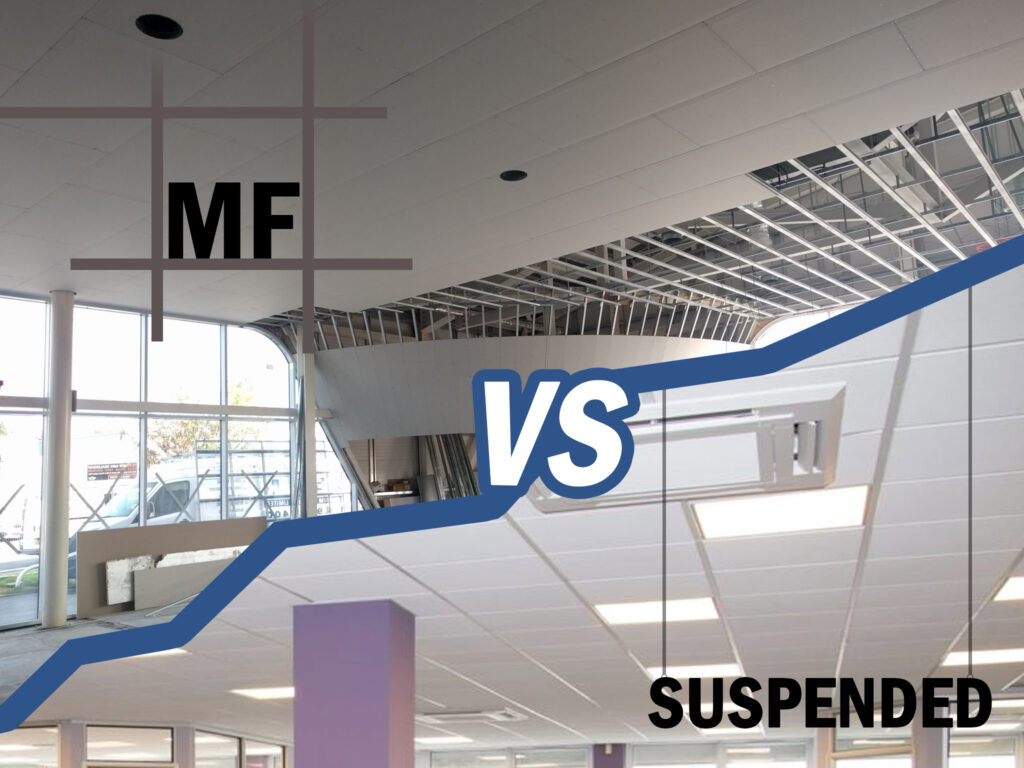
Suspended and MF ceilings are the two of the most common types of ceilings installed in commercial projects. Each has its own benefits and potential drawbacks, but which is better? The answer really depends on the job being carried out and the desired outcomes.
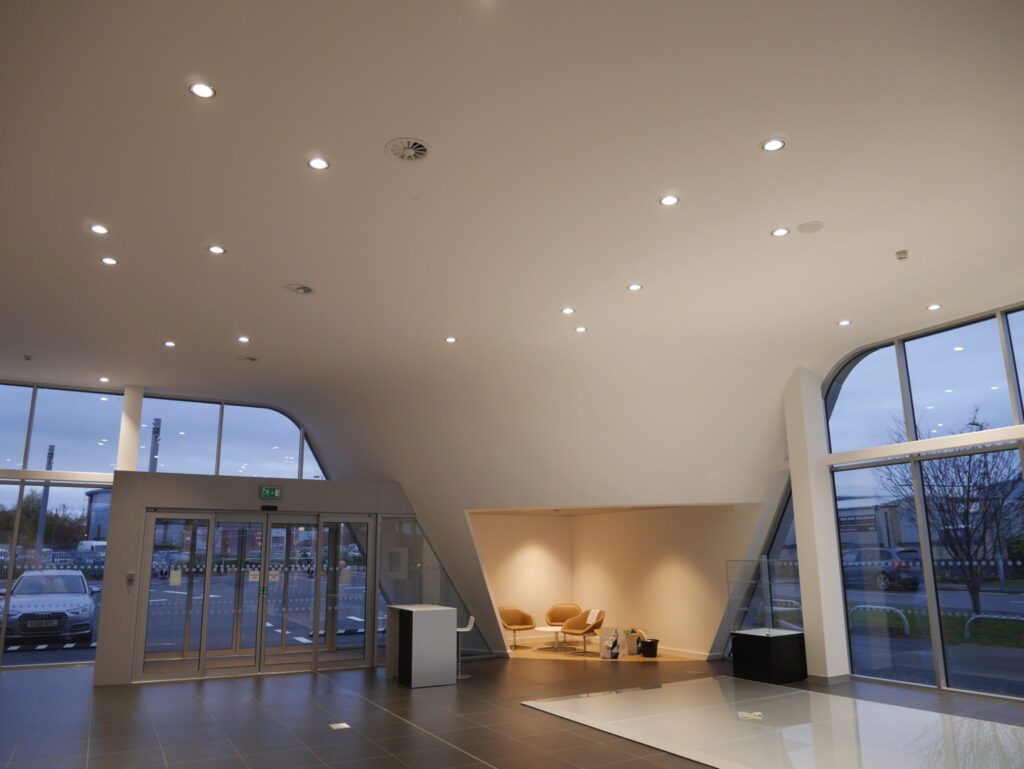
What is the difference:
A suspended or ‘hung / drop’ ceiling consists of a compatible lightweight grid and tile system suspended from the original ceiling or soffit. Tiles can be specified to better service the desired installation outcomes, for example improved room acoustics or to make the ceiling look more aesthetically pleasing. Both the tiles and grid are visible once the ceiling is installed. Commonly found in offices, retail stores, schools and hospitals.
An MF (Metal furring) or ‘plasterboard’ ceiling uses a different type of grid system. This system is also fixed to the original ceiling or soffit, however with a finished MF ceiling the grid is not visible and is covered with plasterboard or other materials. Commonly found in high-end retail environments and hotels.
Which one is right for your job:
The answer to this question depends entirely on the desired outcomes. In general, a suspended ceiling is cheaper and quicker to install compared to an MF ceiling, which is a more expensive and more time consuming to install. However, this does provide a cleaner, high-end finish once installed.
Significant benefits associated with choosing a suspended ceiling include the accessibility it provides to services which may be concealed in the void between the original and suspended ceiling, as-well as the previously mentioned lower costs and time to install compared with other options. Recent developments in tile design and functionality specs mean benefits such as increased sound absorption or visually attractive designs can be achieved at a comparatively lower cost.
Though relatively easy to install care must be taken to properly maintain the ‘invisible’ void above the suspended ceiling, dust and manufacturing particles can accumulate leading to fire and other hazards as has been shown in a number of high profile cases.
Often used in high end retail locations, hotels and applications where a quality sleek finish is required. Due to the nature of the installation, MF ceilings offer much more flexibility in terms of design options. Improved sound absorption can be achieved with the use of specialist boards, however as with the standard installation this can prove relatively expensive compared to other ceiling options.
MF can be more susceptible to damp and impact damage, boards can also crack over time or during installation. Unlike suspended ceiling where a simple tile can be replaced, MF ceiling requires a more timely and costly repair.
